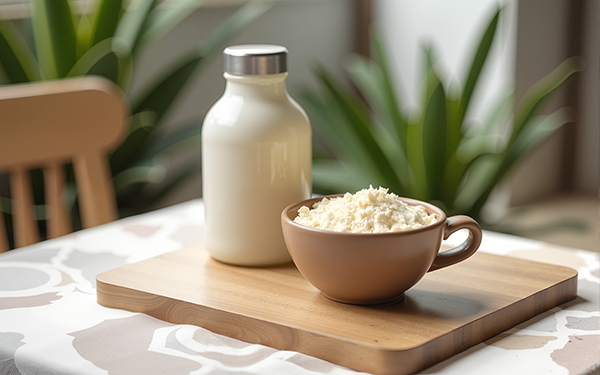The Blog
Sustainable Milks
July 9, 2025

Almonds require an abundance of water to grow. But what about almond milk? Oat, soy, coconut, pea, or… good old dairy? Which is most sustainable? Calculating the water and carbon footprint of milk is complicated, as multiple stages are considered. First, the greenhouse gas (GHG) emissions associated with raising a cow or plant, turning the raw material into the final product, packaging it, and shipping it is considered.
Second is the water use. Other factors include where the food was produced, how much land was required to grow it, and the use of pesticides, fertilizers, and antibiotics. The following results, through the World Resources Institute, considered the GHG and liters of water needed to produce one cup of milk:
● Plant-based milks typically have 1/3 the emissions of cow’s milk, and most use
significantly less water.
● Pea protein milk wins the prize for most sustainable milk, when considering GHG and water! Results revealed that its water footprint was 86% lower than cow’s milk.
● Soy milk wins second and oat and coconut trailed closely behind.
● Almond milk is good for our climate, but uses similar quantities of water as cow’s milk. This is important to consider if the almonds are being grown in a water-scarce region (eg. California).
Protein content was also measured, especially for Americans, known on average to consume more protein than is needed. Pea and soy milk were relatively high in protein content, like dairy, whereas oat and coconut milks were lower. Almond milk surprisingly contained very little protein.
Our food choices vary, including cost, taste, dietary restrictions, access, nutritional content, traditions, and more. Perhaps it’s time, however, to add environmental impact to this list? Next time at the market, consider trying a milk with a smaller footprint. If cow’s milk is your calling, consider buying it from a local, organic farm.
By Mary Closser